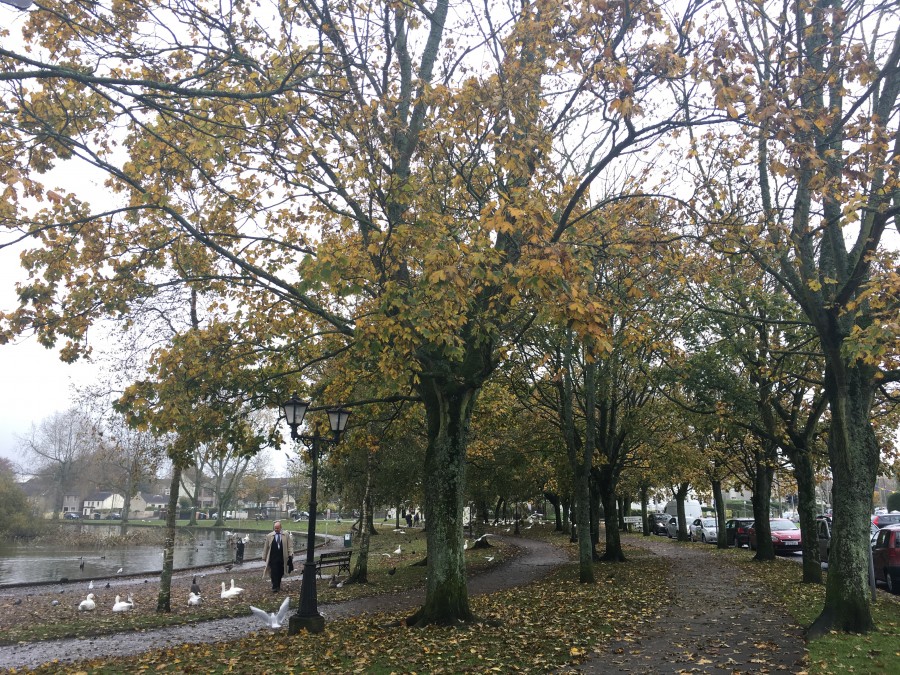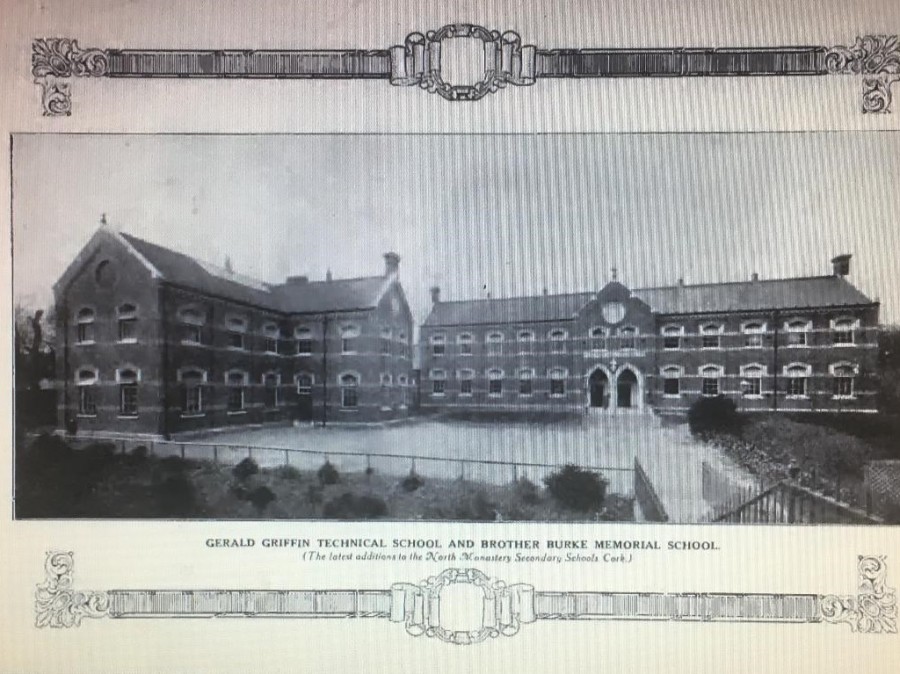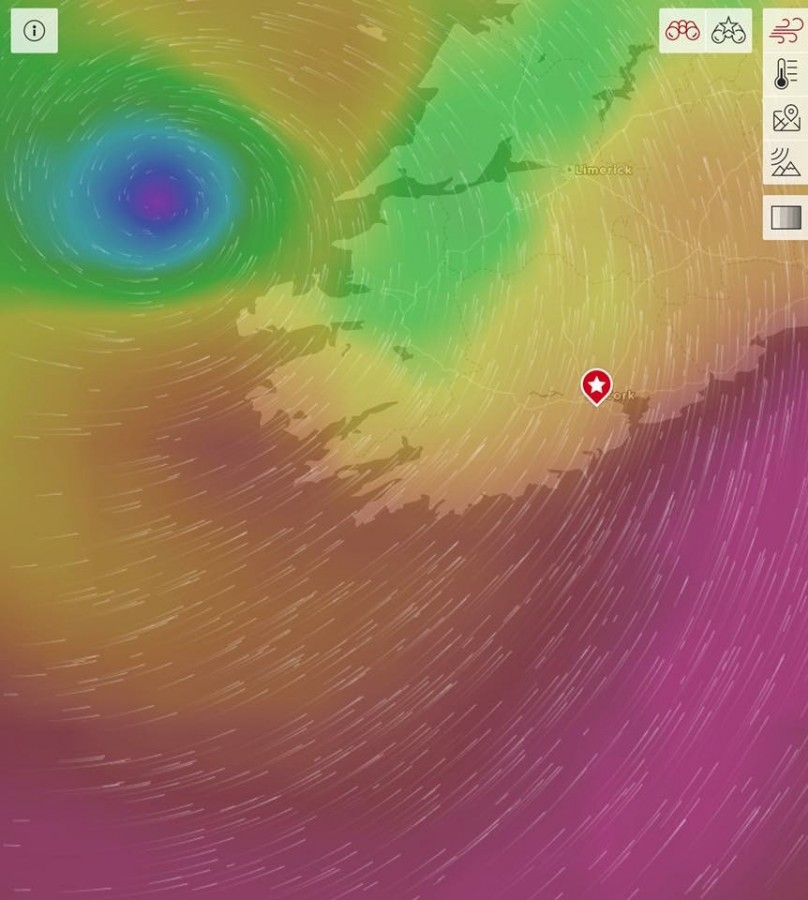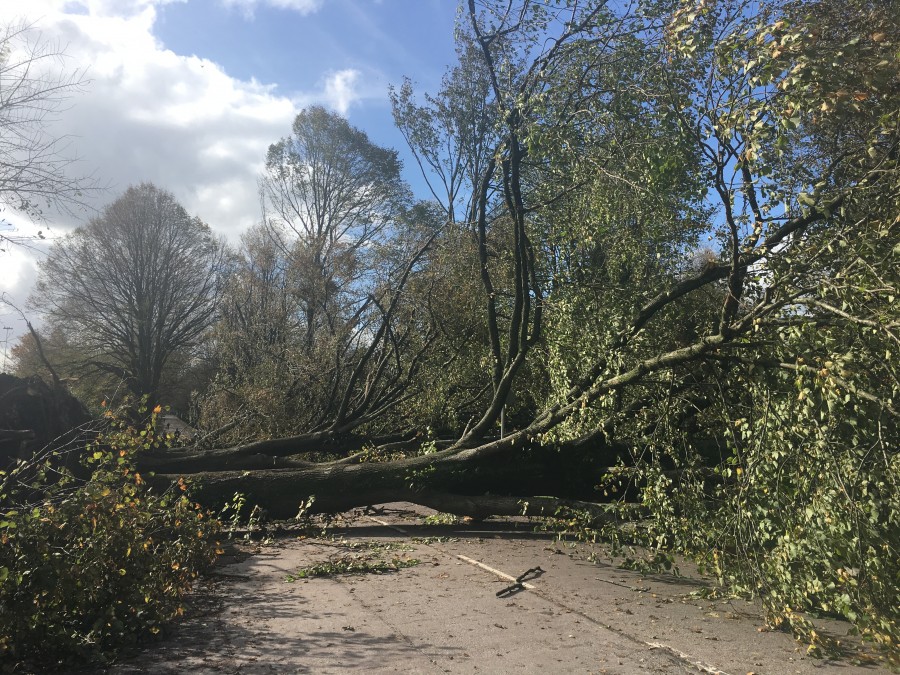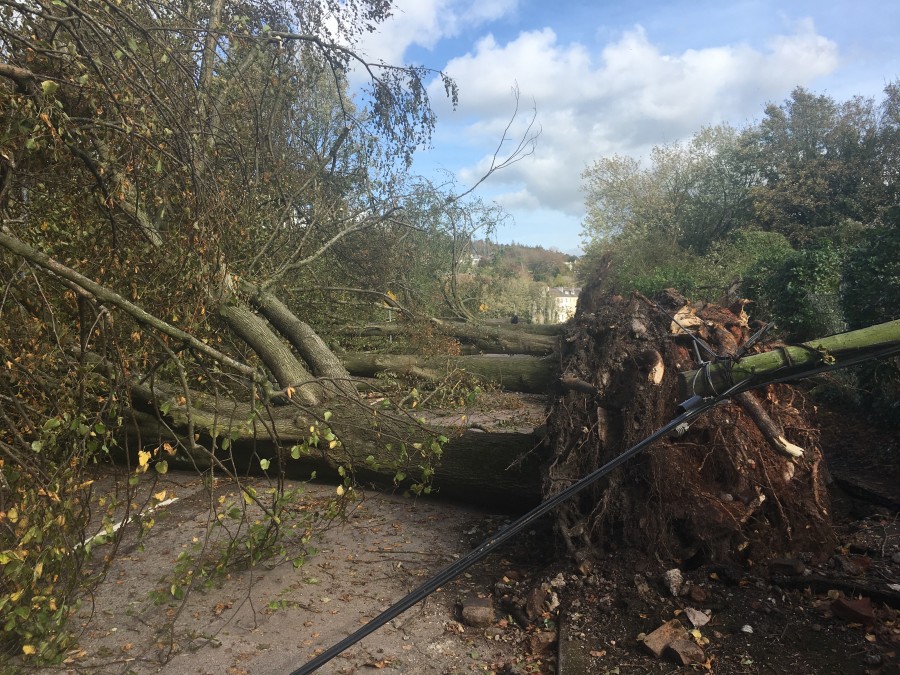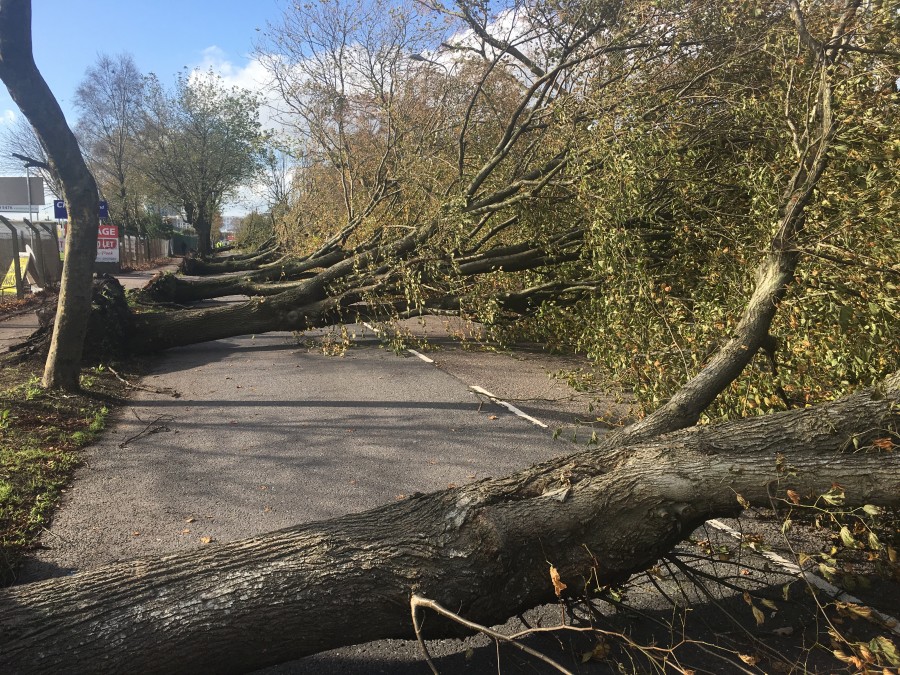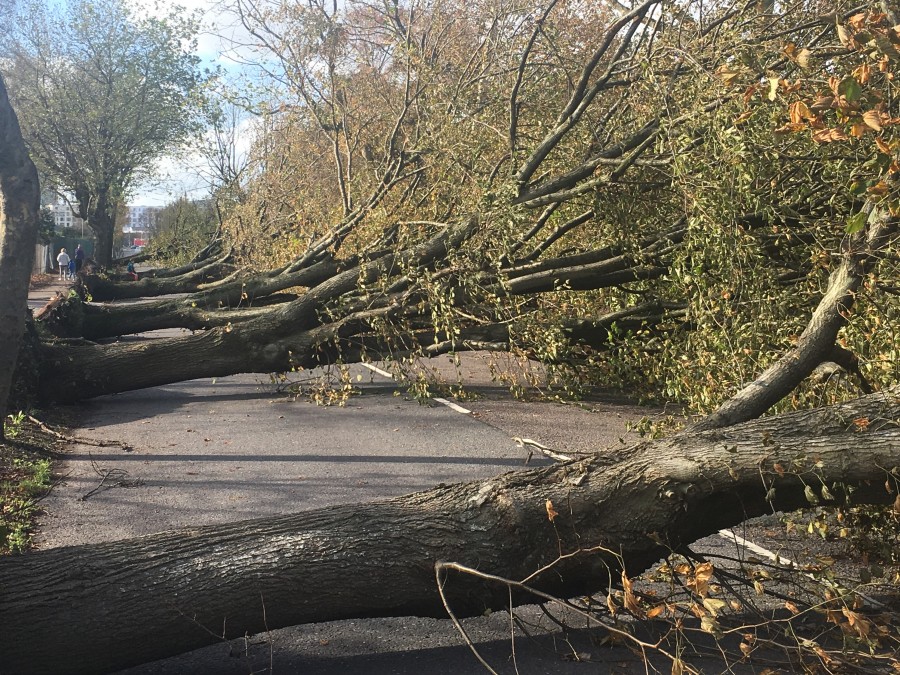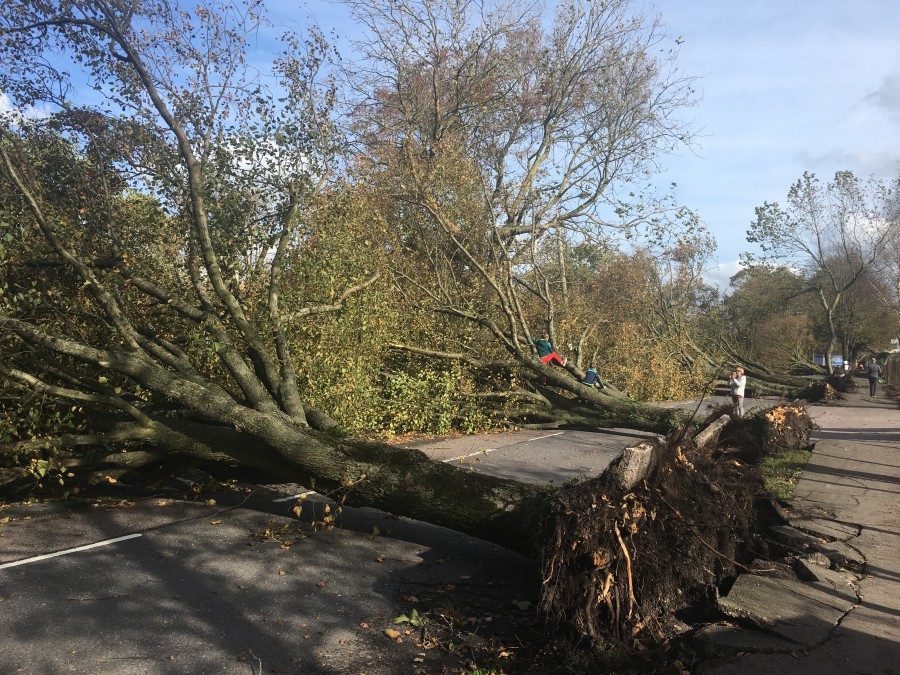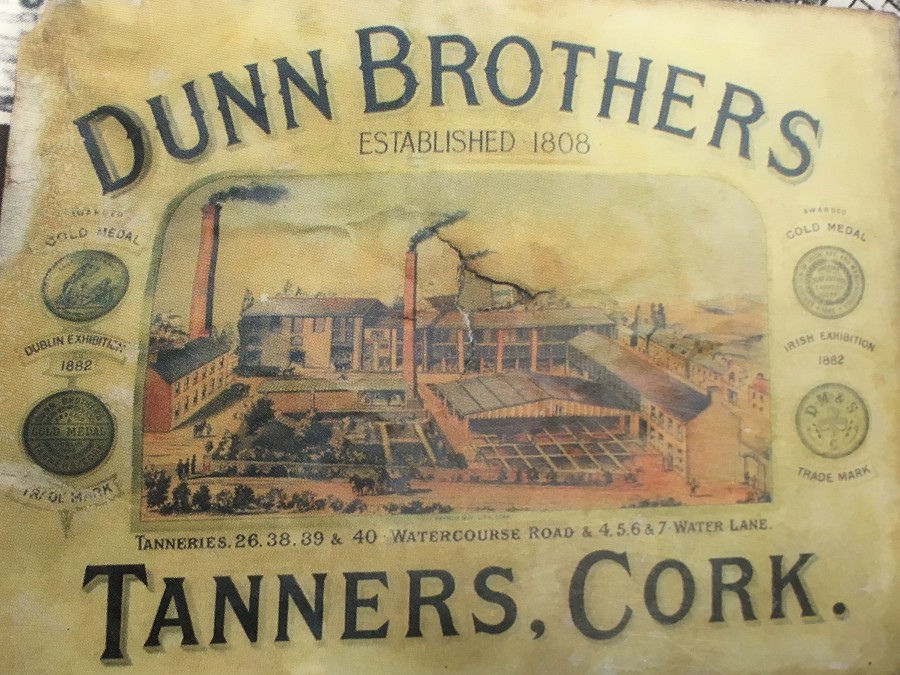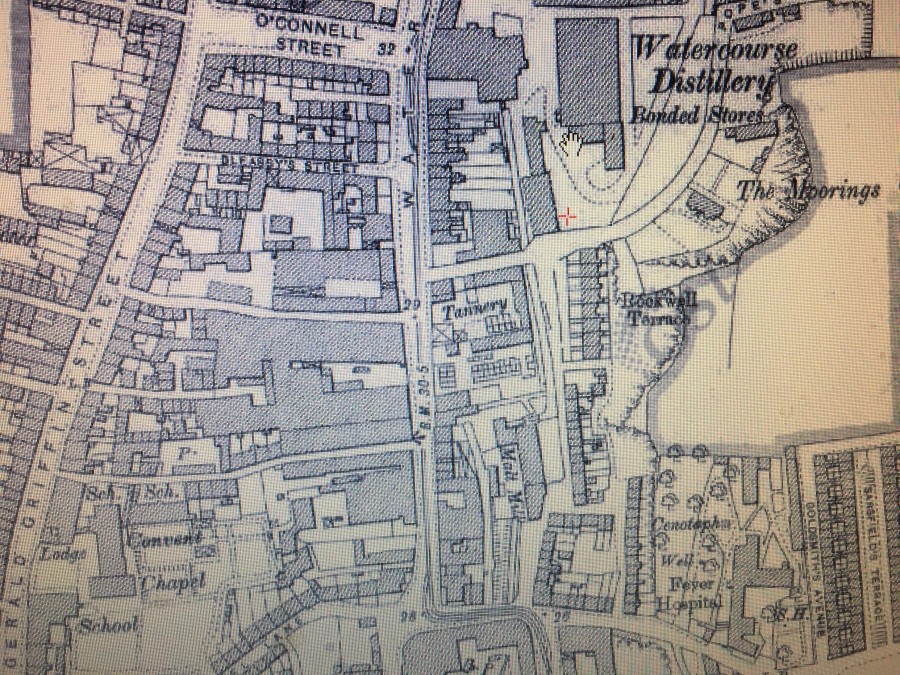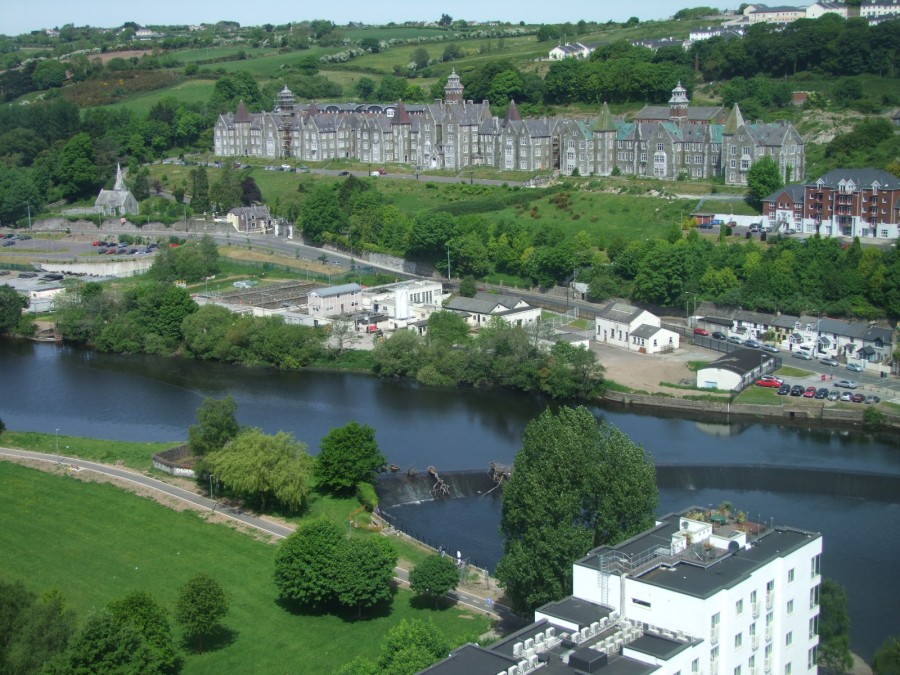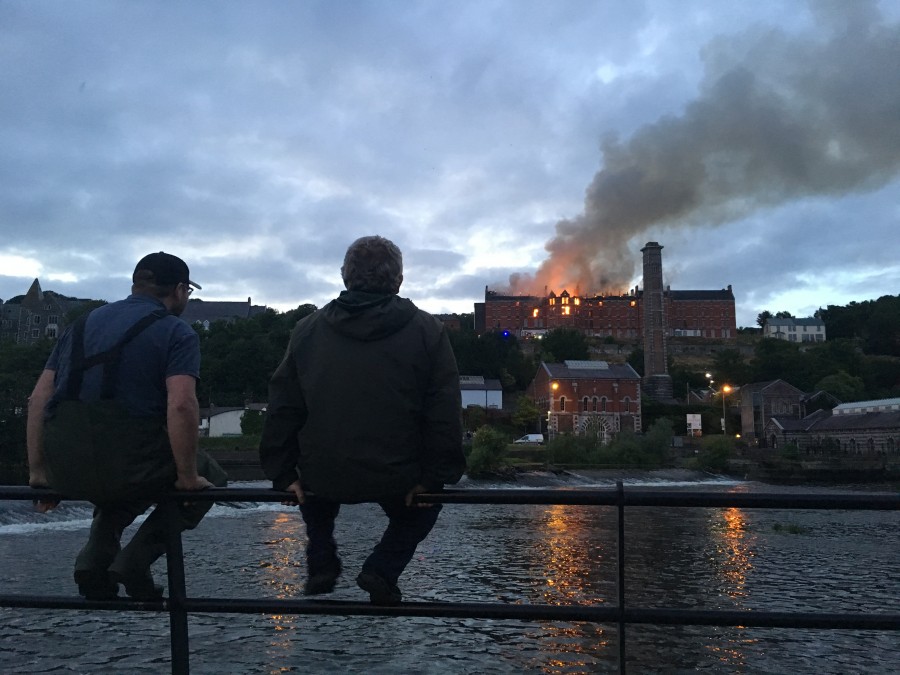Monthly Archives: October 2017
Kieran’s Question to CE and motions, Cork City Council Meeting, 31 October 2017
Question to CE:
To ask the CE about plans for the future regeneration of Daly’s Bridge, which is celebrating its 90th birthday this year and is much revered by citizens? The lattice ironwork is in a poor state and parts of the structure need urgent repair (Cllr Kieran McCarthy).
Motions:
That the City Council through Cork Innovates take an active part in the Start-Up Europe Network. The network gathers all EU regions actively engaged in promotion of startups and entrepreneurship and interested to cooperate and develop joint actions with other regions for this purpose (Cllr Kieran McCarthy).
That the City Council consider installing a footpath where Tramore Lawn joins the Douglas Road. Currently, there is no footpath on this intersection of the two roads making it unsafe and difficult for residents to access the footpaths of the main road (Cllr Kieran McCarthy)
Kieran’s Our City, Our Town, 26 October 2017
Kieran’s Our City, Our Town Article, 26 October 2017
The Wheels of 1917: The North Mon Perspective
This week, 100 years ago, on Wednesday 24 October 1917 Bishop of Cork, Daniel Cohalan, visited the North Monastery School to make the annual presentation of prizes and awards to the successful pupils of the schools. He was received at the Monastery by Brother McNally, Superior. On his arrival he was greeted by a guard of honour of pupils, drawn up with staffs from which flew blue and white pendants, the School’s colours. As the bishop stood on the steps of the six-year-old Brother Burke Memorial Building the gymnastic team went through a series of flag and scarf drills.
The Christian Brothers opened their Cork School in 1811. The system of Secondary Education was introduced in 1879. All secondary schools were fitted with fully-equipped Laboratories for the teaching of Science, and special workshops for Manual Instruction. However, the North Monastery pioneered science instruction early in the second half of the nineteenth century. In 1857 Br James Dominic Burke arrived at the North Monastery and under his guidance the students began the study of natural philosophy (science). Br Burke is widely acknowledged as the father of vocational education in Ireland and made the ‘Mon’ a centre of excellence in scientific and technical education. At this time Br John P Holland (inventor of the submarine) studied in the ‘Mon’ under the guidance of Br Burke. Brother Burke established an Industrial Museum, bringing together materials for nature study, collecting Scientific Instruments, acquiring Manual and Mechanical Equipment, and gradually building up a Laboratory, all tending towards a fully-equipped Day Trades Preparatory School.
The North Monastery were also proud of an ex pupil D Madden, who since November 1916 was head of the Chemistry department in the Crawford Municipal Technical Institute. During his time at the North Mon he pursued a remarkably brilliant secondary course, carrying off first class exhibitions and medals for highest place in all of Ireland in mathematics and science. He played with great success an important part in the Centenary Pageant 1911. He was awarded the Harrington gold medal for highest score in chemistry, for which so many keen young scientists at Our Lady’s Mount competed. At the conclusion of his course at North Monastery, Mr Madden carried off in open competition a science and technological scholarship (value £275), tenable at Royal College of Science, Dublin. His four years course at this institution was marked by the highest honours, especially in chemistry and mathematics, and after specialising in the Faculty of Applied Chemistry under such distinguished teachers as Professors G T Morgan and A Farrelly, he obtained the Associate Diploma of the Royal College of Science, being placed first of his year in chemistry, appointed demonstrator in chemistry at University College, Galway, in February, 1916, Mr Madden obtained by examination in July 1916, the Associateship of the Institute of Chemistry of Great Britain and Ireland, a hall mark in the domain of practical chemistry, and was appointed by the Department of Agriculture and Technical Instruction for Ireland instructor in advanced chemistry for teachers’ summer courses.
The Cork Examiner records that during Bishop Cohalan’s visit in 1917 he was conducted through the different laboratories, technical rooms, and the different classrooms. When he took his seat in the large hall-the choral class under Professor Joseph Curtis, sang in the mother tongue “A Cead Mile Failte. There were also present a number of pupils from the Sullivan’s Quay schools, as well as very many past pupils of the North Monastery.
Joseph Curtis, was a well-known teacher of singing. In his obituary in the Cork Examiner on 28 April 1942, he is noted for teaching singing in Cork Schools, notably in those of the Christian and Presentation Brothers and was considered an expert in the Tonic Solfa system. One of his notable achievements was the training of the boys for the North Monastery Pageant in 1911 In this the singing was no less a triumph than the pageant itself. He was also choir master at Holy Trinity Church for about forty years, where the choir consisted of adult men and boys. He also inspired his nephew Bernard Curtis to take up the music mantle. He nephew went to be Director of the School of Music. When his uncle Joseph retired from Holy Trinity Bernard also took up the reins, teaching and conducting the choir.
Brother McNally, in his October 1917 speech, noted that the students maintained the record of the schools in all departments, religious, intermediate, technical and physical. Pupils in 1917 had secured less than 29 intermediate distinctions. Scholarships included a Honan one to the UCC, worth £150, one entrance, and an exhibition entrance to the same University, a Cork County scholarship, and two science research scholarships. The intermediate included nine exhibitions, two medals, twenty-three prizes (five for Irish and English composition), and 111 passes. There were two Ballingeary scholarships, one Brother Burke Memorial gold medal, and 20 matriculation passes. The choral class received the highest reports that could be got, and in this Brother McNally paid a tribute to its teacher and conductor, Joseph Curtis.
One of the managers of the Ford Company had paid a visit to their classes and expressed his admiration at his facilities and expressed his admiration at the facilities and equipment afforded physical development, too. The athletic success of their pupils was recounted including the junior school championships of Cork city and county in football and hurling for the Cloyne hurling. In field sports they were equally successful.
Captions:
918a. Photograph of entrance to North Mon’s 1911 Brother Burke Memorial building (source: Kieran McCarthy)
918b. Photograph of North Mon, 1919 from Cork, It’s Trade and Commerce (source: Cork City Library)
Storm Ophelia Damage, 16 October 2017
Pictures of some of the 50-60 year old Lime trees that fell on Centre Park Road, Cork during Storm Ophelia. Over 500 trees were felled by the storm on Monday 16 October 2017.
Storm Ophelia, damage on Centre Park Road, Cork, 16 October 2017
Kieran’s Our City, Our Town, 19 October 2017
Kieran’s Our City, Our Town Article,
Cork Independent, 19 October 2017
The Wheels of 1917: Dunn’s Tannery of Blackpool
One hundred years ago this week, a handover of industry occurred. Alderman R H Beamish acquired Dunn’s Tannery in Blackpool. He intended not only to revive the leather manufacture there, but to develop and extend it. At one time the tanning industry give employment to hundreds of hands in Cork, and the leather manufactured not only acquired a high reputation through Ireland, but found its entry into Great Britain and the Continent.
In 1917 thousands of cattle were killed for their hides in the city and the districts surrounding it. The hides were exported, while tons upon tons of leather were imported. Critics, quoted in the Cork Examiner in 1917, highlighted that there were no economic advantages in sending away hides to be tanned and bringing them back again to be manufactured into boots and shoes, or what was happening to a large extent, importing the boots and shoes. They expressed that was no adequate reason why Cork should not turn out material for all classes of footwear.
Eighty-two years previously in 1835, records of industrial enterprises reveal that there were possibly forty-six tan yards in various parts of the city, the most extensive being located in the North Gate Bridge vicinity where there were 615 tanners in constant employment. The average number of hides tanned annually amounted to 110,000 and from 1835 onwards tanners found it necessary to import hides from as far afield as Montevideo and Gibraltar in order to supplement local supplies.
Richard Griffith’s Valuation of land in 1852 lists twenty-one tanneries in the Blackpool area. However, by the late nineteenth century, owing to a series of causes, this once flourishing industry declined, and many of the old tanneries were closed down. By the turn of the twentieth century only a handful of tanneries remained in production.
The principal tannery in nineteenth and early twentieth century Cork was Dunn’s at 26 and 38-40 Watercourse Road. It had been founded in 1808 by Patrick Dunn at Clarence Street (now Gerald Griffin Street) and moved to above in 1810. Another one of the most extensive tanyards in Cork belonged to Daniel, fourth son of Jeremiah Murphy. A partnership formed with the firm of Dunn Brothers who amalgamated their business and what emerged became the largest tanning concern in the country at the time.
At the 1883 Cork Exhibition, the newspaper coverage on the exhibits refers to Dunn’s leather butts as long having been the standard article of sole leather in the South of Ireland. All the hides used by Messrs Dunn were obtained from the River Plate in South America, where the thickest hides in the world were produced. Messrs Dunn rounded the greater portion of their hides, i.e. they cut off the inferior portions, which when tanned were called offal, and when only limed and dried were called glue pieces, and these were used by paper manufacturers in sizing their paper.
In 1892, in a guide by authors Stratten and Stratten of the leading mercantile houses and commercial enterprises, they described the Dunn Tannery in Watercourse Road as a “large and well-constructed hollow square covering about two acres. The centre formed the tan pits, around which group the various drying sheds workshops, stores, leather warehouses and offices. The various works were laid out on a very extensive scale and were complete with the latest machinery of the day”. The Dunn Brothers’ great speciality were still sole leather in butts and bends. They purchased exclusively the best South American hides, and employed only the most effective and highly-reputed astringents, such as bark and valonia. Stratten and Stratten remarked: “The firm has a substantial right to the high reputation and eminent position it has so long enjoyed in the commerce and industry of the country”.
Messrs Dunn Brothers continued to turn out a class of leather for which there was a good demand, but their business closed down some time before the death of Mr Christopher J Dunn in November 1916. Christopher Dunn had been identified with the commercial and industrial life of Cork for very many years and was chiefly concerned in the tanning business. He was a director of the Cork Steam Packet Company, and from time to time acted on the public boards of the city. He was educated at Clongowes, was President at one time of the Cork Incorporated Chamber of Commerce and Shipping, President of the Literary and Scientific Society, was elected Governor of the Munster Institute in 1907, and was Vice-chairman of the machinery section of the Cork International Exhibition of 1902. He was a member of the City Magisterial Bench, the Cork Butter Market Trustees, the directorate of the Cork Gas Company, and Messrs. Eustace and Co. He was also High Sheriff of Cork at one time, and a member of the Governing Body of the University College since 1910. He was the author of a work entitled Machinery and the Masses and on many occasions contributed papers and essays on industrial matters. As a mark of respect to his memory the flags in the harbour were hung at half-mast.
Next historical walking tour with Kieran: From Our Lady’s Hospital to Atkin’s Hall, the story of the Cork Lunatic Asylum (new tour), Saturday 21 October, meet at gates of former Our Lady’s Hospital, Lee Road, 12noon, free.
Captions:
917a. Advertisement for Dunn’s Tannery, Watercourse Road, late nineteenth century (source: Cork City Library).
917b. Section of Ordnance Survey Map of Watercourse Road, c.1900 showing the Dunn’s Tannery and Watercourse Distillery; some of these which was excavated during the construction of the Blackpool Bypass. For more information check out the edited book in Cork City Library, Old Blackpool, A Historic Cork Suburb (2006) by M Hurley, G Johnson & C Brett.
Storm Ophelia Update, 17 October 2017
PRESS RELEASE, 09.30 on 17 October 2017
Status Red Weather Warning, 15 October 2017
Kieran’s Our City, Our Town, 12 October 2017
Kieran’s Our City, Our Town Article, 12 October 2017
Walking Tour of Our Lady’s Hospital Complex
Etched into the northern skyline overlooking the Lee Fields is Ireland’s longest and one of its most atmospheric buildings. The old Cork Lunatic Asylum was built in Victorian times. As part of the last set of public free historical walking tours for this season and in association with the owners of Atkins Hall, I have a new walking tour telling the story of the old Asylum and what emerged in time as Our Lady’s Hospital complex (Saturday 21 October, 12noon, meet at main gate on Lee Road). The complex closed in the late 1980s and in recent years, parts of the main grey building have now been redeveloped into apartment units.
The first asylum for what contemporary Cork society deemed “insane” in Cork was founded under the Irish Gaol Act of 1787/8. The Cork Asylum was the second of its kind to be established in Ireland and was to be part of the South Infirmary on Blackrock Road. The Cork Asylum in the late 1840s lacked finance and space to develop a proper institution. A Committee of the Grand Jury of Cork County (leading landlords and magistrates) examined the existing asylum and began a verbal campaign for its replacement. In 1845, a Westminster Act was enacted to create a District Asylum in Cork for the City and County of Cork.
In April 1846, a Board of Governors of the Asylum at the South Infirmary purchased and commenced work at a new site in Shanakiel. The Board set up a competition of tender for an architectural design. Mr William Atkins was appointed, with Mr Alex Deane as builder. Work commenced in mid-1848.
The asylum was located on a commanding location on a steep hill, overlooking the River Lee. The building was three floors high and was divided into four distinct blocks. Three blocks were located at the front and were designed to contain the apartments for patients, along with the residences for the physicians, matron and other officials of the Asylum. The building materials were reddish sandstone rubble, obtained near the site, and grey limestone quarried from sites from the opposite site of the River Lee. Internal fittings such as fireplaces were said to be of marble supplied also from the southside of the city. The fourth building block was located at the rear of the central block, and comprised the kitchen, laundry, workshops, bakehouse, boiler house and other rooms of an office nature. Heating was steam generated in a furnace house.
The new Asylum was named Eglinton Lunatic Asylum after the Earl of Eglington, and was opened in 1852. The principal types of people admitted which made up the highest number comprised housewives, labouring classes, servants, and unemployed. Forty-two forms of “lunacy” were identified from causes such as mental anxiety, grief, epilepsy, death, emigration to “religious insanity”, nervous depression, want of employment and desertion of husband or wife.
Plans for an extension to Eglington Asylum were put together in the 1870s. The aim was to accommodate over 1,300 patients. The three blocks were connected into a single building. In 1895, the Cork Asylum described as one of the most modern asylums in Western Europe. Conditions in the institution were deemed good by critics. Making up staff, there were 72 men and 56 women. Lectures were given to staff by lecturers of mental illness at Queen’s University College Cork now University College Cork. A Church of Ireland chapel was completed in November 1885 with William Hill as architect. In 1898, a Roman Catholic Church was designed by Hill and St Kevin’s Asylum was also constructed. In 1899, a new committee of management for the Asylum was established under the newly formed Cork County Council. In 1926, the Asylum became known as Cork District Mental Hospital. In 1952, The Hospital’s name was changed to Our Lady’s Psychiatric Hospital.
Like everyone else on Cork’s Lee Fields last July, I watched with great sadness the burning of the old St Kevin’s Asylum (built c.1895-1899) and had that deep sense of shock and loss, not just at one level but across a number of levels – Yes – St Kevin’s Asylum had a harrowing past but it’s future should not have played out this way.
Chatting to Corkonians they expressed their sadness and frustration that a part of Cork’s social history was burning and being destroyed; they were sad to see a burnt scar of a landmark emerging on the cityscape in one of the city’s scenic spots, dismayed that it was a potential arson attack out resulting out of someone’s boredom, frustrated that campaigns over the years by resident community groups and public representatives did not gauge muster with the owners of the site, sad that the owners of the site, the HSE, did not get to pursuing a plan for the site (despite having completed some really tasteful renewal works in the old Cork workhouse at St Finbarr’s Hospital), upset for the memory and almost forgotten memory of former patients and former staff members, frustrated that in the national context, there are many other old asylum buildings that are decaying and not being utilised for a myriad of potential uses. The new walking tout is an attempt to re-awaken interest in the heritage of the site and revalorize its importance to the city.
Next historical walking tour with Kieran: From Our Lady’s Hospital to Atkin’s Hall, the story of the Cork Lunatic Asylum (new tour), Saturday 21 October, meet at gates of former Our Lady’s Hospital, Lee Road, 12noon, free.
Captions:
916a. View of Our Lady’s Hospital from top of County Hall, present day (picture: Kieran McCarthy)
916b. Burning of Our Lady’s Hospital, 4 July 2017 (picture: Kieran McCarthy)
Daly’s Bridge/ Shakey Bridge, Urgent Concerns
Cork’s iconic Shakey Bridge may be one ‘shake’ from collapse
Written by Eoin English, Published in the Irish Examiner, Wednesday, October 11, 2017
There have been calls for an urgent health-and-safety audit of Cork’s iconic Shakey Bridge amid fears it could be one shake from collapse, writes Eoin English.
Historian and city councillor Kieran McCarthy said it was shocking to see one of the city’s best-known landmarks and tourist attractions — the city’s only suspension bridge, famous for its wobble — decay to such a dangerous state“.
Urgent action is required before we have to make the sad call to close it off to the public completely,” he said. “That would be a shame.”
As talks continue over the city’s 2019 budget, he plans to ask the city council’s chief executive, Ann Doherty, to urgently identify and set aside funding to repair the bridge which was officially opened 90 years ago.
Daly’s Bridge is a 48m-span wrought-iron suspension pedestrian bridge which was built by a London-based company over the northern channel of the River Lee in 1927 to a design by former Cork City architect Stephen Farrington.

Its construction at the site of an ancient ferry crossing was funded by butter merchant John Daly, who was asked to provide money to help build a bridge to facilitate increased pedestrian traffic coming from the Sunday’s Well area of the city to cross the river to the Mardyke.
It was officially opened in April 1927 and quickly became known locally as the Shakey Bridge, because of the movement or wobble in its wooden slat platform caused as pedestrians cross.
This quirky feature made it one of the city’s must-see tourist attractions.
It is in constant use by people visiting Fitzgerald’s Park and by students crossing from the northside of the city to the Mardyke to access UCC’s sports facilities, its Western Gateway building, and its main campus.

An inspection report over five years ago highlighted corrosion to its iron latticework, prompting calls for repairs. Those calls have been repeated over the years, but funding was never secured.
The corrosion has steadily worsened and the rust has eaten through several bars on the bridge’s railings, exposing dangerous gaps. The ironwork at key joints crumbles to the touch.
Mr McCarthy said it has now become a serious health-and-safety issue.
“Cork has many bridges, but Daly’s Bridge is celebrated in the city’s historical life. People have a strong affection for it,” said the Independent councillor.
“It’s very disappointing to see how it’s been left to decay like this. I wouldn’t like to see the bridge closed, but from a safety perspective, we may have no option.”

He said UCC has invested millions in developing its Mardyke sports campus, and that the city council has invested millions in revamping nearby Fitzgerald’s Park and revitalising the Mardyke area.
“As the economy picks up, and as funding becomes available, we must prioritise investment in Daly’s Bridge,” said Mr McCarthy. “It would be a terrible shame if the bridge was closed off for lack of investment.”
Last week, city officials unveiled major restoration and repair plans for St Patrick’s Bridge, which will be funded by Transport Infrastructure Ireland, and they said they are trying to identify funding streams to carry out the necessary repairs to Daly’s Bridge.

This story first appeared in the Irish Examiner
